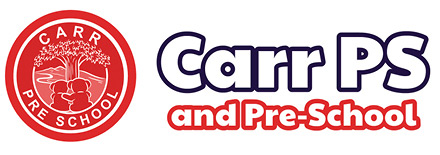Autumn Term
Numeracy
P1
Patterns
Sorting
Data Handling - using Venn or Carroll Diagrams to sort for one criterion
Area - Compare two objects, which one will cover the most space
Length - Compare two objects - longest and shortest
Weight - Compare two objects - heaviest and lightest
Time - Understand passage of time according to school day
Understand Yesterday, Today, Tomorrow
Introduce Days of the week
Capacity - Compare three containers - full, empty, half full
2D Shapes
Work with number 0-5
P2
Patterns
Sorting
Place Value - Counting to 20
Addition up to 15 and number bonds
Money
Length - comparing three objects
Time - Days of the week, Months of the year and Seasons
Weight - comparing three objects
2D Shape
Shape and Space - positional language
Literacy
P1
Phonics
Phase 1 phonics is the first stage of phonics. At this stage, the focus is primarily on developing speaking and listening skills. Speaking and listening are an important set of literacy skills that will create the foundation to a lot of your children's further learning.
Phase 1
- Environmental sounds.
- Instrumental sounds.
- Body percussion (e.g. clapping and stamping)
- Rhythm and rhyme.
- Alliteration.
- Voice sounds.
- Oral blending and segmenting (e.g. hearing that d-o-g makes 'dog')
Phase 1 phonics is visiting regularly throughout the whole year.
In October children begin Phase 2 phonics. Phase 2 is learning the sounds that letters make.
Children will beging with s, a, t, i, p, n, c, k, e and h
Reading
Children are introduced to the characters from our main reading scheme, Oxford Reading Tree.
Mum, Dad, Biff, Chip, Kipper and Floppy.
Writing
Letter formation is taught for each letter that they are learning the sound of.
Recognising and writing their own name.
P2
Phonics
P2 will continue to be exposed to Phase 1 Phonics as mentioned above.
They will revise the initial phonics letters that they were introduced to in P1.
They will then move on to Phase 3 phonics.
Phase 3 begins to introduce children to more complex graphemes using two (digraph) or three (trigraph) letters.
qu, sh, ch, th, ng, ai, ee
Reading
Children will continue moving through the levels of our Oxford Reading Tree Scheme
Writing
Children will be learning to write the diagraphs learned in phase 3.
Capital letter formation will be taught.
Children will be learning to writing full sentences, using capital letters at the beginning, full stops at the end and finger spaces between each word.
The World Around Us
P1/2
The following topics are covered throughout the term, they incorporate science, history and geography and are closely linked to structured play.
- Autumn
-Christmas
The Arts (including Art and Design, Music and Drama)
P1/2
Art and Design
-Investigating, talking about colours, lines and patterns
-Looking at and responding to a piece of work by an artist
-Exploring and using a wide range of materials to create art and models
-Talking about their own and other pupil’s art work and how it was made
Music
-Working creatively with sound (exploring high/low sounds), exploring methods of making sounds, talking about sounds we make and hear. Using sounds to create effects in a story
-Singing and performing with simple instruments
-Listening and responding to their own and others’ music making (nodding heads, tapping feet, clapping hands). Responding imaginatively to music
Drama
-Expressing thoughts and feelings through Role Play
-Developing creativity through imaginative play
-Taking part in drama games/performances for assembly/parents
Personal Development and Mutual Understanding
P1/2
Through Circle Time discussion and activities, children will be enabled to explore
-Themselves and personal strengths
-Their own and others feelings and emotions
-The importance of keeping healthy and staying safe
Physical Development and Movement
P1/2
Indoor and Outdoor physical play to develop fundamental movement skills, self-esteem, fun and a sense of teamwork and success.
Regular planned activities including:
- Athletics
- Dance
- Games
- Gymnastics












